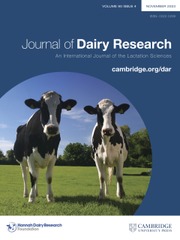No CrossRef data available.
Article contents
Deep learning assisted muzzle-based identification of Vrindavani cattle – A crossbred of India
Published online by Cambridge University Press: 15 October 2025
Abstract
Biometric identification represents a transformative, advanced technology with significant implications for herd management. Its adoption addresses the critical requirement of accurate identification methods along with upgraded approaches on higher traceability, disease control, genetic management, and economic returns. In this work, a database of muzzle images was collected from 264 Vrindavani cattle, with ages ranging from 6 months to 10 years. To assess the accuracy of muzzle print as a biometric means of identification, this study investigated the efficiency of a 68-layer convolutional neural network called SqueezeNet for the identification of Vrindavani cattle (a crossbred developed in India) using 2,640 muzzle images. It was observed that SqueezeNet gives a harmonious blend of superior accuracy and minimal complexity, rendering it an optimal option for devices with constrained specifications and computing power. Further, the results of this study showed an identification accuracy of 97.22% with a remarkably small model size (<4 MB). This compact size makes it significantly advantageous compared to other models.
Information
- Type
- Research Article
- Information
- Copyright
- © The Author(s), 2025. Published by Cambridge University Press on behalf of Hannah Dairy Research Foundation.

